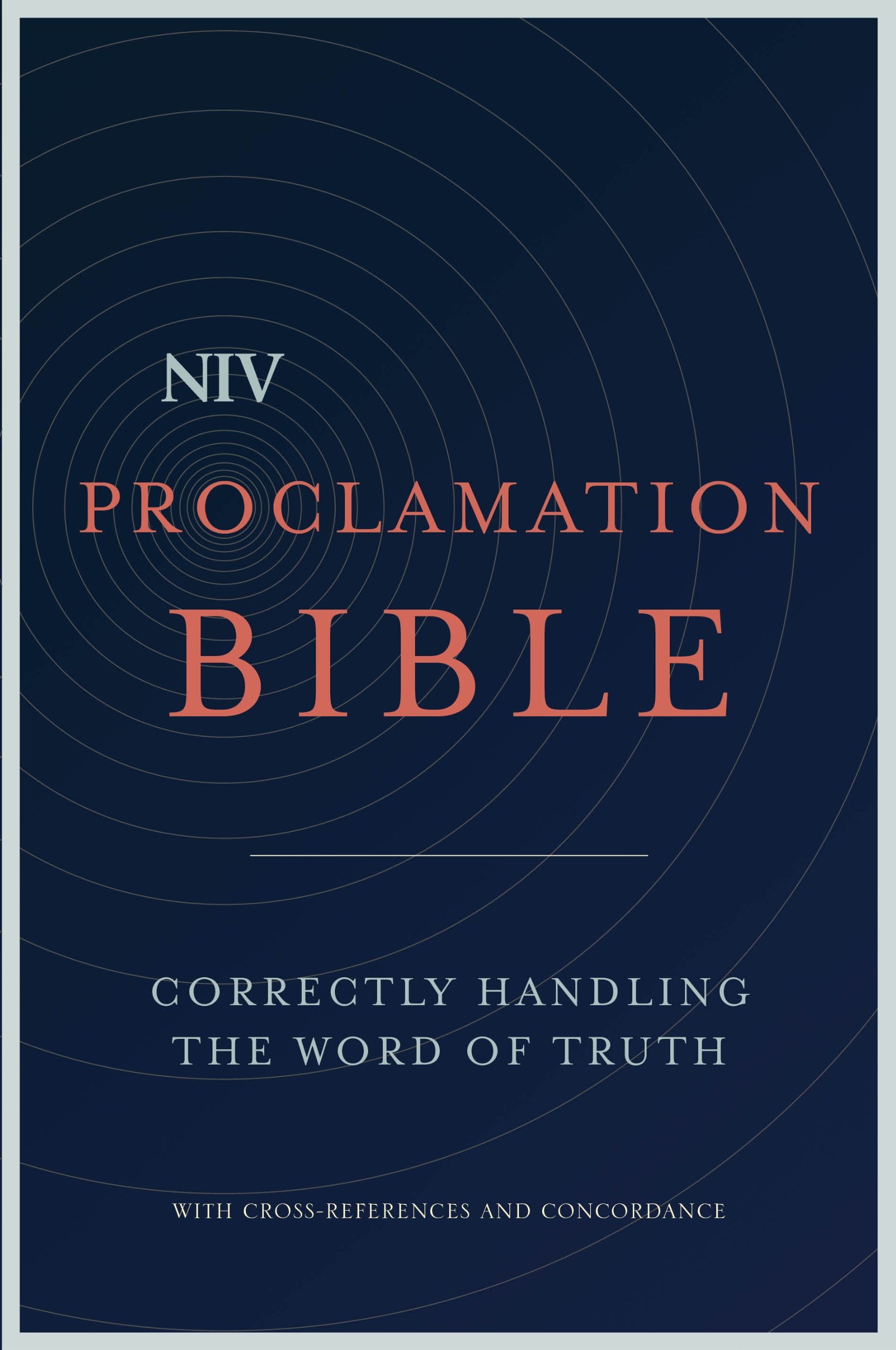The Proclamation Bible is not a study Bible per se. It merely contains articles about how to teach the Bible.
Some of the articles are a bit problematic. Why? Because they are written from a Christian Teacher's perspective for Christian Teachers. And these folks are very very very educated theologians. This means they know their stuff. But it also means that some of the articles are written in graduate theology-ese. Because while the writers know their stuff, they don't seem to know how to write about what they know to people who don't already know what they're talking about. These theologians are very aware that they are teachers and therefore knowledgeable. They want to preach the word truly and rightly. And they are writing to other teachers. So there is definitely a feel of a great US teachers versus all those other Christians (sheep) divide. It can be off-putting but I don't think it's meant to be.
The basic Bible set up:
A General Preface
Editor's Preface
Contributors
What is the Bible by Mark D Thompson, Principal of Moore Theological College, Sydney
A Bible Overview by Vaughan Roberts, Rector of St Ebbe's Church Oxford, and President of Proclamation Trust
The Historical Reliability of the Bible by Dirk JongkindResearch Fellow in New Testament Text and Language, Tyndale House, Cambridge, and Deputy Senior Tutor, St Edmund's College, Cambridge
Finding the "Melodic Line" of a Book by Tim Ward, Associate Director of the Proclamation Trust Cornhill Training Course, London
From Text to Doctrine: The Bible and Theology by Peter Adam, Vicar Emeritus of St Jude's Carlton, and Canon of St Paul's Cathedral, Melbourne
From Text to Life: Applying the Old Testament by David Jackman, Past President of the Proclamation Trust, London
From Text To Life: Applying the New Testament by Charles Skrine, Curate at St Helen's, Bishopsgate, London
From Text To Sermon: Preaching the Bible by Christopher Ash, Director of the Proclamation Trust Training Course London
From Text to Study: Small Groups and One-to-Ones by Leonie Mason, Trainer of Ministry Apprentices and Bible Study Leaders at St Helen's, Bishopsgate, London
Biblical Interpretaton: A Short History by Gerald Bray, Research Professor of Divinity at Beeson Divinity School, Birmingham, Alabama, and Director of Research at the Latimer Trust
Then the Bible itself begins.
Each book has an introduction which shows
The Message
Structure
Points to Consider
Commentaries
The layout of the Bible books is easy on the eyes with a good typefont. The type is dark and incredibly readable, unlike the NIV Spiritual Renewal Study Bible which has very light printing. The Scripture is placed in two columns on each page with cross-references in the middle of each page. The bottom of the page has definitions or alternate translations. There are sub-headings within chapters which will help guide the reader. There are also cross-references listed under the sub-headings if a scene or event is duplicated elsewhere. There are two ribbons for placeholders. Poetry is written in poetic form. Scriptures that are quoted in other Bible books are also set off in poetic form. The words of Jesus are not in red.
There is a Table of Weights and Measures
Concordance
Maps
It's a solid hardcover Bible.
For better or worse, the key word throughout most of this book is training; Theologians training others on how to read Scripture, how to understand Scripture, how to teach Scripture, and how to hear the Holy Spirit. There are many patterns to learn here, all of which will be helpful to some or all Bible teachers. But which could become almost legalistic and prohibitive if doggedly followed.
The best thing about this Bible are the introduction to each of the Bible books. They are very insightful and the vocabulary is accessible to anyone. Those introductions alone are worth the price. The second-best thing are the articles in the front of the Bible about how to understand, read, and teach the Bible. But I say second-best because I suspect the folks who most need those articles might be the folks who can't get through them.
I can understand a book written on a college graduate level. But I cannot imagine these articles being accessible to pastors who may not have had much college. Some of the article writers write as if they are writing a graduate thesis! At that time, one feels as if one is wading through a tome on linguistics written by a computer because the writer seems to have forgotten how to write conversationally. Other times the writer seems to be "speaking to the choir" because he is using jargon -- even though he thinks he is not-- and terms only church folks use. So this book will bless many people. It's a Bible after all. But it would be most useful for the super-educated types and for new pastors who might want to know and use certain patterns in their teaching and preaching.
As a Charismatic Christian, I would probably dislike some of the patterns recommended by some of these teachers but a good workman knows how and when to use the rules and how and when to put them aside. Also, as someone who thought Calvin was a means-spirited and possible false prophet, I don't know if I can trust his pattern of exegesis as much as Gerald Bray does.
But all in all this is a good book. Those who like the NIV translation will like it.
I received this book free in exchange for a fair and honest review











No comments:
Post a Comment